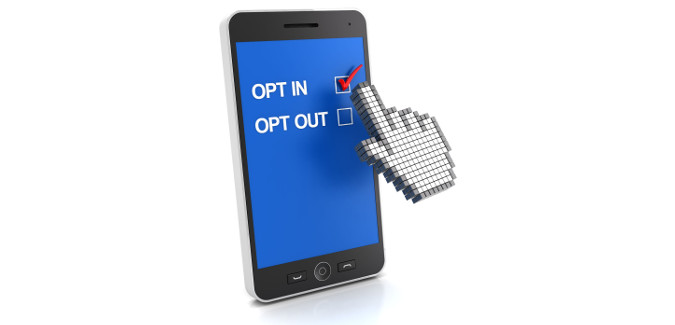×

All it takes is 2 easy steps
If you're a winner, we will send you $100 Amazon gift card at Dreamforce!


Understanding and following a few simple best practices will help ensure your success with SMS messages.
Following are a few of the initial best practices we share with new customers. These simple dos and don’ts will give you a head start on your own conversational text messaging programs.
DO: One of the most important best practices is to confirm opt-ins before you send the first message of your text messaging program. Always be sure to get explicit consent in writing, through a web form, a Keyword text response or a document. That way you stay in compliance with the TPCA rules and regulations, avoiding a SPAM violation than will cost you $500 or more for each text message sent that’s out of compliance.
DON’T: Just go out and buy a list of mobile numbers and start sending text messages. That’s a fast way to be labeled as a Spammer and fined accordingly.
DO: Create an opt-in program to grow your SMS messages lists. Be sure to make it simple for people to opt-in with a keyword response to a short code. Entice them to opt-in with an offer, such as a coupon, discount or some kind of game where they can win prizes. Make it fun, exciting and most of all relevant to your audience. Advertise your opt-ins on your website, promotional materials and social media posts. Be sure to tell your opt-ins what to expect from your messaging program, for example how many messages to expect and at what frequency.
DON’T: Use misleading forms or bait and switch by compelling people to sign up for emails and then switch to text messages about another topic. If you want to offer them another type of content, send a message and ask them to opt-in to the new program.
DO: Use short codes to make opting out easy and immediate. Be sure to share the opt-out short code when your buyer first opts into your campaign. Also, remind contacts how to opt out on a regular basis, with a simple addition to another message or a stand-alone message.
DON’T: Ignore creating an opt-out process. Just as in any other form of direct marketing, you need to offer people a way to stop receiving your text messages. When someone opts-out, be sure to confirm their opt-out immediately with a message, and then honor that opt-out. Sending any messages after someone opts-out is spamming and you will be fined. Not to mention making the people you want to converse with angry.
DO: Research to find the best times for interacting with your audience in their specific country or region. The best times vary from region to region, and of course based on time zones.
DON’T: Schedule messages at annoying times, like late at night, during local dining hours or early in the morning. Just think about those telemarketers that call at the most inappropriate times. Do not be like them with your messages.
DO: Ask your audience members what they care about to learn what’s relevant to them. Then use relevant offers as your CTAs. For example, if a segment of your list likes discounts, offer them coupons. If another segment likes to be ahead of their neighbors, offer them early access to new arrivals or new services.
DON’T: Expecting people to jump into your texting program is not the way to grow your list. Offer them something of value and relevant to them. Never send out a messaging campaign without a compelling CTA and simple response option.
DO: Use SMS messages to learn about your individual prospects and customers. Ask questions about what matters to them, survey them for preferences and always ask for their opinion on their experience with your organization. Use those insights to send them relevant content and offers. Focus on what they want to know, not what you want to say.
DON’T: Sending everything to everyone on your list is a quick way to get mass opt-outs. So is sending massive amounts of random content on a frequent basis. Don’t do it.
DO: Set a reasonable schedule for your text messaging outreach. One message per week is accepted as a best practice frequency. If you have some news or an offer that needs to be sent immediately, you can do that, but only on an infrequent basis.
DON’T: More is not better in the case of text messaging. Don’t ignore your frequency and send more messages just because you’re getting great responses. You’ll ruin your momentum and increase opt-outs.
When you follow these simple best practices for conversational text messaging, you will attract and engage more prospects, move them through your pipeline more quickly and convert more sales. It’s simple and effective. Once you try it, you’ll wonder why you didn’t adopt text messaging sooner.
CATEGORIES: SMS-Magic 101
TAGS: SMS messages
Stay updated on business text messaging
Text MAGIC for Demo to
USA: 36343
AUS: (61)409564682
UK & ROW: +44 7860017509
Email: care@sms-magic.com